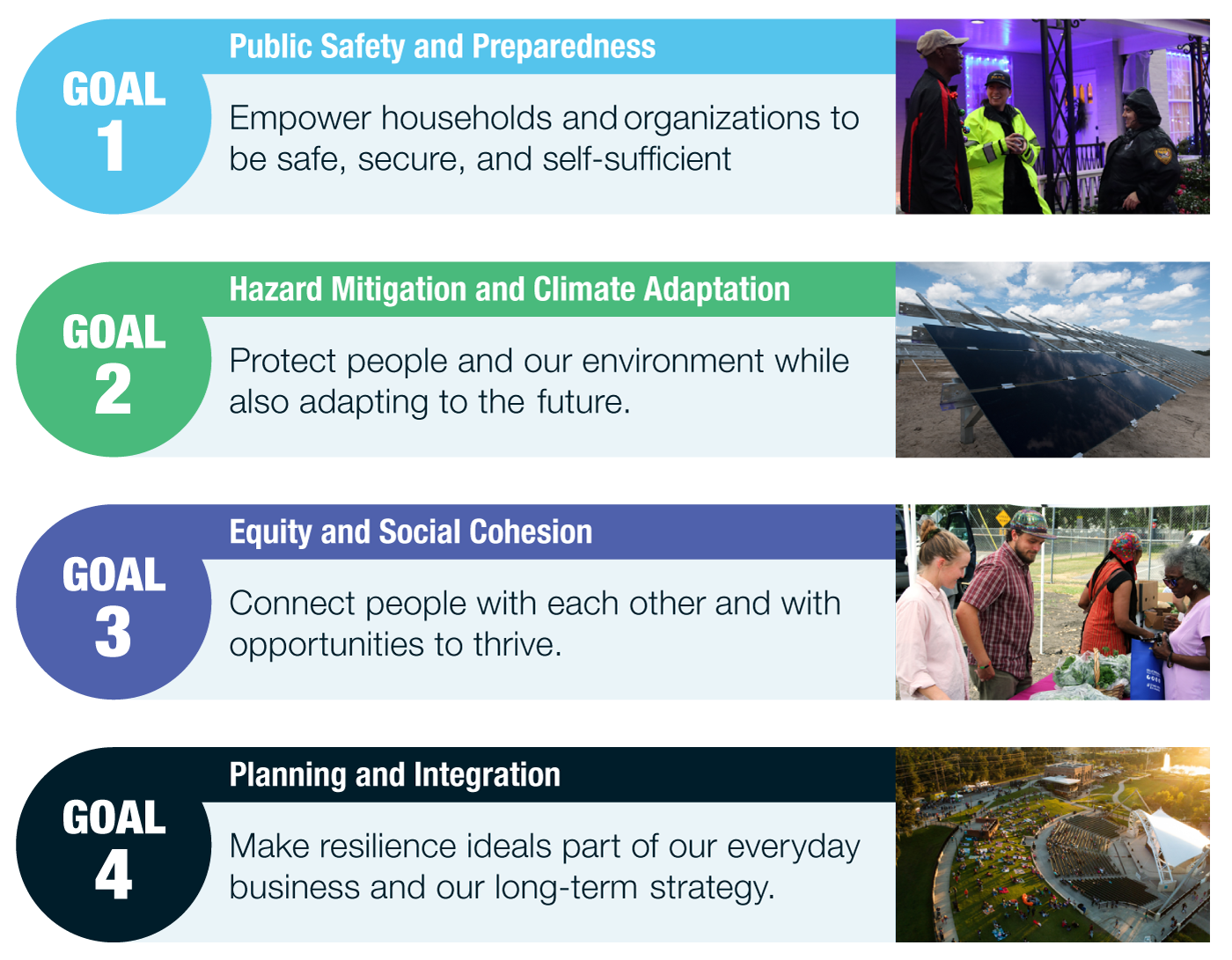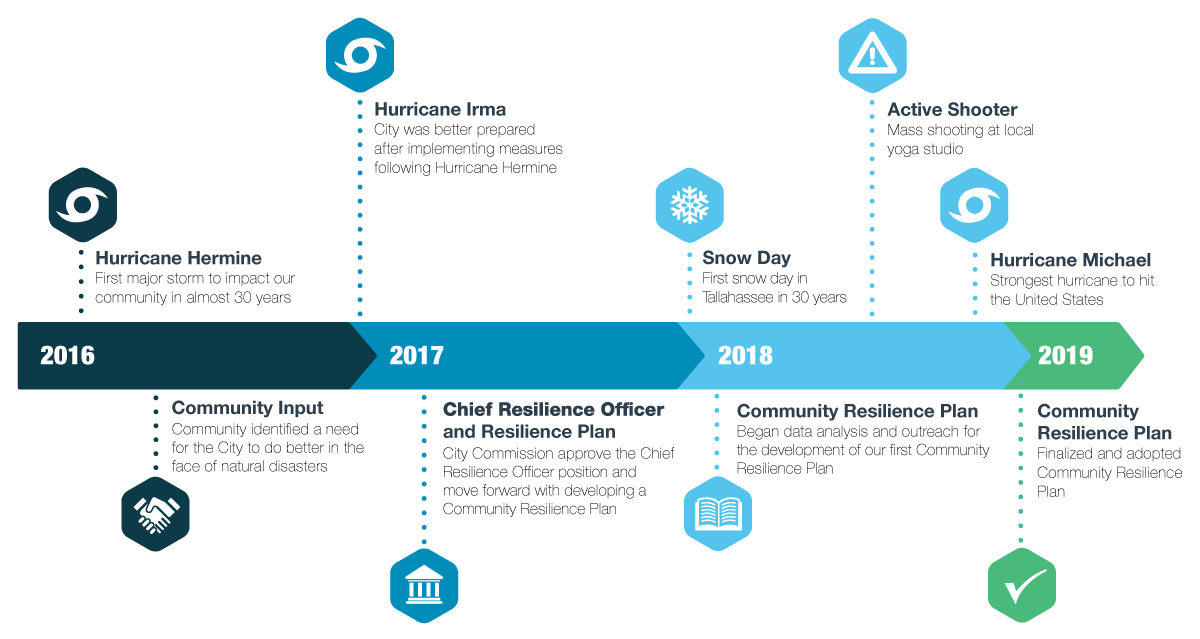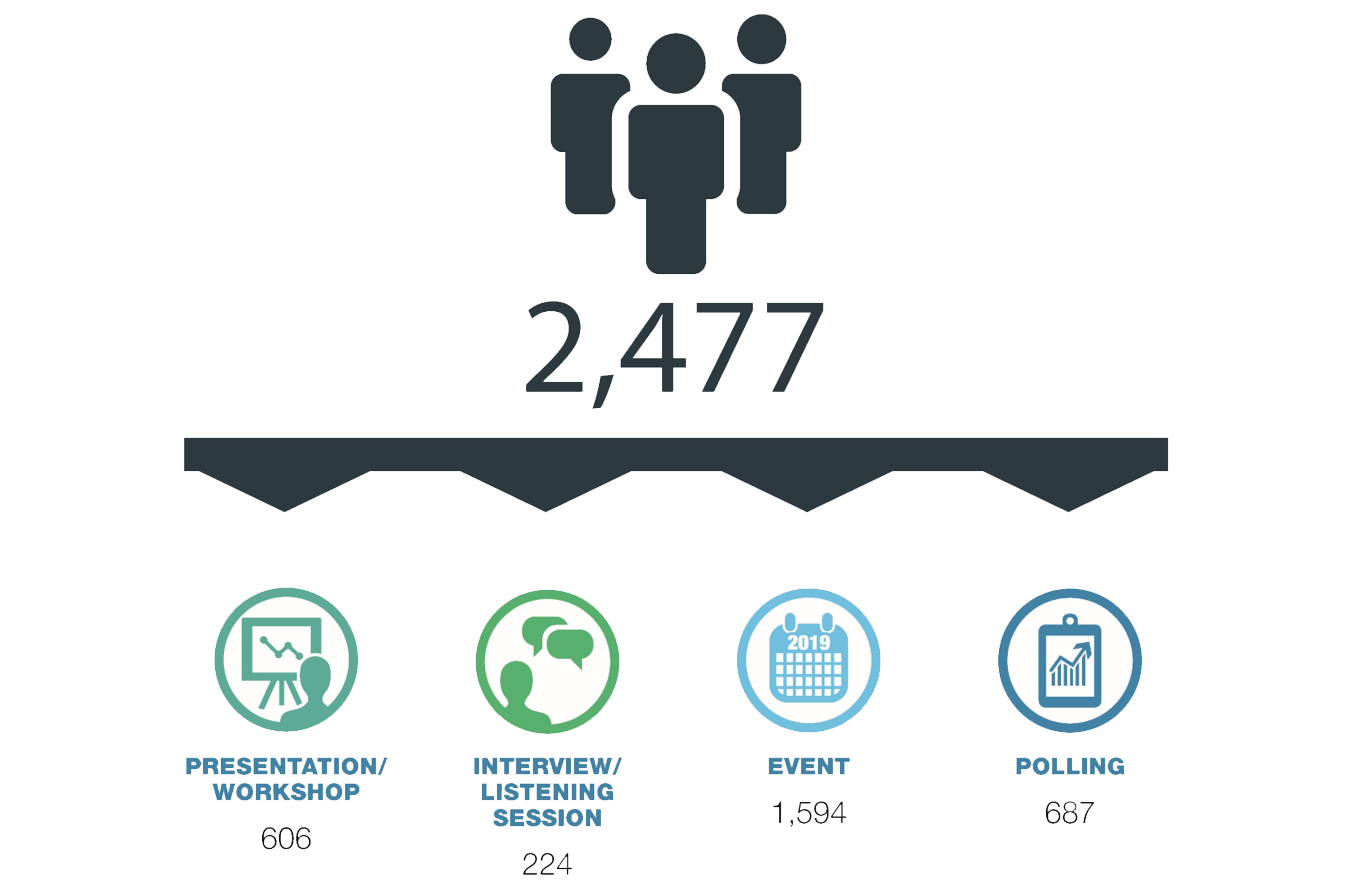Community Resilience Plan
The Tallahassee Community Resilience Plan is an ambitious plan, the first of its kind for our community, and positions Tallahassee at the forefront of innovation and inclusiveness as we proactively address the various pressures that threaten our quality of life. Through the Plan, we address underlying chronic stresses that affect our community, such as job, food, and housing insecurity, as well as acute shocks that include flooding, extreme temperatures, and significant storm events, especially as they intensify with our changing climate. The Community Resilience Plan takes a bold step towards our collective sustainable future, guided by the ideal that everyone in our community can have the opportunity to thrive, even as we face down new challenges.
The Community Resilience Plan is a call for our entire community to partner together to make our city stronger for the benefit of all residents, so we can be better equipped to address current and future challenges. Four overarching goals were developed from these strategies represent the pillars of a resilient Tallahassee, each with six strategies that point towards intentional ways to solve complex problems. Each strategy connects our specific urban challenges with unique opportunities to strengthen our community and offers initial actions that are achievable, measurable, and impact driven.

Each initial action within the Plan will either be accomplished or initiated within the 5 years since Plan adoption, aligning with the timeline of our 2024 Strategic Plan. Annual progress reports are posted above to illustrate our continued resilience efforts.
Plan Development
As a capital city in one of the fastest growing states, a regional health and educational hub, and a diverse city with a storied past, Tallahassee is in a unique position to lead in urban resilience. In the aftermath of Hurricane Hermine, the City leadership directed staff to develop a comprehensive resilience plan to address the various threats impacting our community. In collaboration with various agencies and partners, the City of Tallahassee developed its first ever Community Resilience Plan. The development of this Plan followed the process identified in the US Climate Resilience Toolkit, which integrates community engagement with a data driven approach to assessing and addressing vulnerabilities.

The Plan contains a comprehensive assessment of threats to social, economic, and environmental features and characteristics, which influence the community's ability to be resilient and recover from a range of acute shocks and chronic stresses. This assessment was developed through extensive stakeholder engagement and community outreach. This outreach strategy leveraged previously planned activities while also incorporating new, targeted meetings, workshops, and events. Those who were engaged included business and public agency leaders, college students and professors, youth at a summer camp, neighborhood associations, City employees, and many others.
 Planning stakeholders list
Planning stakeholders list
Thanks to these efforts, staff were able to identify physical assets (buildings and spaces) that provides critical services and that the community values as part of the fabric of Tallahassee. In addition to threat documentation, outreach efforts helped to identify immediate and long-term strategies to secure a safer and more resilient future for Tallahassee.